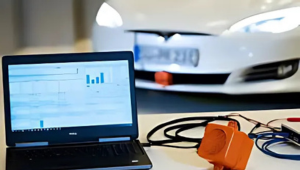Program Overview
This program provides a comprehensive introduction to Advanced Driver Assistance Systems (ADAS) and sensor integration, focusing on the core technologies driving vehicle safety and automation. Participants will gain insights into the functional roles of key sensors like LIDAR, radar, and cameras, and their critical contributions to ADAS features. The course also delves into testing and validation techniques, equipping participants with practical knowledge to address real-world challenges in ADAS implementation. Delivered by an industry expert with 25+ years of experience, the program balances conceptual understanding, real-life examples, and interactive exercises for a holistic learning experience.
Features
- Understand the core technologies and applications of ADAS in modern vehicles.
- Recognize the roles of LIDAR, radar, and cameras in enhancing vehicle safety.
- Learn key testing and validation techniques for ADAS features.
- Gain practical insights to address real-world challenges in ADAS implementation.
Target audiences
- R&D professionals from automotive/mobility sectors
- Testing and Validation specialists
- Product development teams from automotive/mobility sectors
- Software engineers working on ADAS, sensor technologies, or autonomous systems.
Curriculum
- 4 Sections
- 19 Lessons
- 1 Day
Expand all sectionsCollapse all sections
- Overview of ADAS Technologies5
- 1.1ADAS technology categories: Lane Keeping Assist, Adaptive Cruise Control, Autonomous Emergency Braking, and more.
- 1.2Safety and convenience features: Definitions, purposes, and impact on driving behavior.
- 1.3Case studies of ADAS implementation in real-world scenarios.
- 1.4Group discussion: Share perspectives on the impact of ADAS on modern driving.
- 1.5Quiz: Identify ADAS features from vehicle case studies.10 Minutes0 Questions
- Functional Role of Sensors in ADAS6
- 2.1LIDAR: Principles, advantages, and limitations in ADAS.
- 2.2Radar: Signal processing, detection range, and object tracking.
- 2.3Cameras: Role in lane detection, object recognition, and driver monitoring.
- 2.4Sensor fusion: How ADAS combines data for better decision-making.
- 2.5Hands-on activity: Analyze sample sensor data and discuss how it aids ADAS features.
- 2.6Real-world scenario: Troubleshoot an ADAS malfunction caused by sensor misalignment.
- Testing and Validation of ADAS Features6
- 3.1Virtual testing: Software-in-the-Loop (SiL), Hardware-in-the-Loop (HiL).
- 3.2Physical validation: Controlled track testing, urban environment testing.
- 3.3Test challenges: Adverse weather, sensor calibration, and real-world scenarios.
- 3.4Role of standards: ISO 26262 (Functional Safety) and NCAP (New Car Assessment Program).
- 3.5Simulation exercise: Evaluate ADAS feature performance in a simulated environment.
- 3.6Group activity: Propose testing approaches for a specific ADAS feature (e.g., Adaptive Cruise Control).
- Conclusion and Wrap-up3






